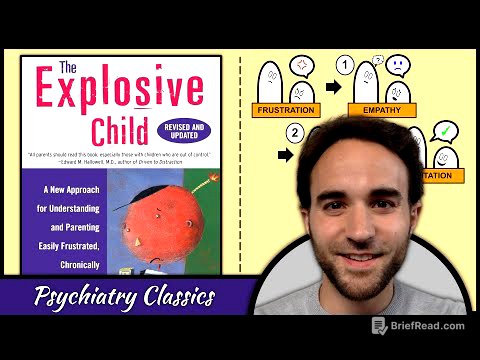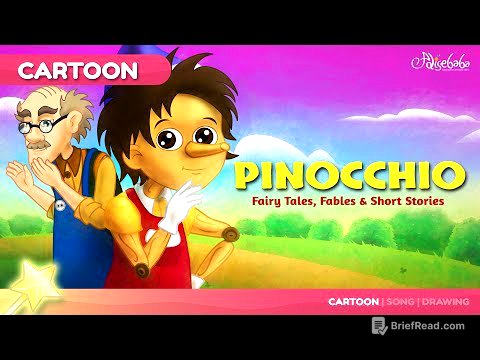TLDR;
This YouTube video by Deepak Yadav Education provides a detailed analysis of The Hindu newspaper, dated November 2, 2025. It covers a range of topics including RBI data on household savings, Kerala's claim of being an extreme poverty-free state, Lucknow being declared a UNESCO Creative City of Gastronomy, spider web research, the dangers of cigarette butts, and the use of gold nanoparticles in reducing obesity.
- RBI data indicates increasing household debt and decreasing asset creation.
- Kerala claims to be the first Indian state free from extreme poverty, sparking political controversy.
- Lucknow receives UNESCO recognition for its rich culinary heritage.
- New research explores how spiders use web vibrations to capture prey.
- Cigarette butts are highlighted as a significant environmental hazard, promoting antimicrobial resistance.
- Gold nanoparticles show promise in converting white fat to brown fat, potentially combating obesity.
Introduction [0:01]
Deepak Yadav welcomes viewers to the Daily Hindu News and Editorial Analysis for November 2, 2025. He mentions that today's newspaper contains several important articles that warrant a detailed discussion. He also informs viewers that the weekly compilation is delayed due to the importance of today's articles, but a comprehensive monthly compilation for October will be uploaded soon, organized thematically.
Telegram Channel and Map Question [0:18]
Deepak explains how to access the PDF of the lecture through his Telegram channel, "Deepak Yadav Education PDF." He then introduces a map-based question for the audience, asking them to locate Aini Airbase on the map and share its location in the comment section.
RBI Data on Household Savings [3:41]
The first article discusses new RBI data indicating that Indian households are increasingly in debt while their asset creation is declining. The analysis compares data from 2019-20 to 2024-25, revealing that while financial assets have increased, liabilities have grown at a much faster rate. Specifically, asset generation grew by 48% while liabilities increased by 102% over the last 5 years. This trend is described as a post-pandemic phenomenon, with increased consumption driving higher borrowing for housing, vehicles, and education.
Changes in Saving Patterns [10:42]
The analysis highlights a shift in saving patterns, with people moving away from bank deposits due to low interest rates and towards mutual funds and the stock market. While stock markets offer higher returns, they also carry greater risk. Mutual funds are presented as a less risky alternative, where experts manage investments across various companies. The importance of consulting official financial advisors and avoiding investment recommendations from unverified sources is emphasized.
Economic Implications and Policy Dimensions [15:50]
The declining household savings have implications for domestic capital formation and long-term economic growth. The increase in home loans and borrowing for consumption provides temporary support to growth but increases the debt burden on households. The Reserve Bank of India (RBI) monitors household financial savings to maintain economic stability, while the government promotes financial literacy and offers long-term savings schemes like NPS and PPF.
Kerala Declares Itself Extreme Poverty Free [18:56]
The second article discusses Kerala becoming the first state in India to declare itself free from extreme poverty. Extreme poverty is defined as a condition where individuals cannot fulfill their basic needs such as food, shelter, and healthcare. The Kerala government attributes this achievement to various programs implemented since 2021, including data collection, verification of communities in need, and provision of food, healthcare, housing, and income support.
Kerala Government Programs and Sustainable Development Goals [23:07]
The Kerala government implemented programs such as the Life Mission for housing, MGNREGA for employment, and Kudumbashree for food security. These initiatives align with the Sustainable Development Goals (SDGs), particularly those related to poverty eradication, zero hunger, good health, quality education, and reduced inequalities.
Political Controversy and Sustainability [26:29]
The declaration has sparked political controversy, with the opposition UDF questioning the validity and timing of the announcement, suggesting it is a publicity move ahead of elections. Concerns are raised about the verification process and the sustainability of poverty eradication efforts, given the dynamic nature of poverty and potential future challenges.
Lucknow Declared UNESCO Creative City of Gastronomy [29:33]
Lucknow has been declared a UNESCO Creative City of Gastronomy, recognizing its rich culinary heritage, particularly Awadhi cuisine. This recognition is expected to boost tourism and economic growth in the region. The declaration was made during the 43rd UNESCO General Conference in Uzbekistan.
UNESCO Creative Cities Network [31:46]
The UNESCO Creative Cities Network, launched in 2004, aims to foster international cooperation and promote tourism through various creative fields, including gastronomy. The network recognizes cities for their unique contributions in areas such as crafts, design, film, literature, media arts, music, and gastronomy. Lucknow's selection is based on its centuries-old Awadhi cuisine, cultural diversity, and the unity reflected in its shared food traditions.
Awadhi Cuisine and Sustainable Tourism [33:39]
Awadhi cuisine, popular since the Nawabi era (18th and 19th centuries), blends Mughlai, Persian, and North Indian influences. It features slow-cooked dishes with aromatic spices, presented in a royal manner. Popular dishes include Gulauti Kebab, Seekh Kebab, Nihari, Biryani, Kachori, and Sheermal. This recognition is expected to promote sustainable tourism and generate local employment.
Global Gastronomy Destinations and Previous Indian Cities [35:10]
Lucknow joins a list of global gastronomy destinations, including Tucson (USA), Qingdu (China), Phuket (Thailand), and San Antonio (USA). Previously, Hyderabad (2019) and Varanasi (2015) have also received this recognition for their distinct food cultures.
Spider Web Decor and Vibration Control Theory [36:46]
A new study published in PLOS ONE explores the purpose of decorations in spider webs, known as stabilimenta. These decorations, often in X or zigzag shapes, were previously not well understood. The new research introduces the Vibration Control Theory, suggesting that spiders use these decorations to detect prey through vibrations.
Vibration Control Theory Explained [38:50]
Scientists from Denmark, Italy, Sweden, and the UK observed the behavior of Wasp spiders and found that the decorations help spiders with poor vision to detect insects trapped in their webs. When an insect collides with the web, it creates vibrations that are transmitted to the spider, alerting it to the presence of prey.
Cigarette Butts and Superbugs [41:47]
The article discusses the environmental and health hazards of discarded cigarette butts, which can promote antimicrobial resistance and the growth of superbugs. Cigarette filters are made of cellulose acetate, a non-biodegradable plastic, and contain thousands of chemical toxins.
Composition and Environmental Impact [44:33]
Cigarette butts can persist in the environment for 10 to 15 years and contain toxins such as tar, nicotine, heavy metals, and formaldehyde. The World Health Organization (WHO) estimates that antimicrobial resistance could cause 10 million deaths per year by 2050 if not addressed.
Antimicrobial Resistance and Disease-Causing Techniques [45:49]
Cigarette butts promote antimicrobial resistance by facilitating the exchange of genes between bacteria, leading to the development of drug-resistant strains. Smokers can transmit bacteria through saliva onto the cigarette butt, which then mixes with soil bacteria, creating dangerous new strains.
Health and Environmental Implications [47:40]
The environmental and health implications include risks to human health, environmental pollution, and challenges in waste management. Antimicrobial resistance is a major global threat, and cigarette butts contribute to this growing problem.
Gold Nanoparticles and Obesity Reduction [48:38]
The final article discusses the use of activated gold nanoparticles to reduce obesity. These nanoparticles are inserted into the body to convert white fat into brown fat, which can be burned for energy. This technique has shown promising results in reducing belly fat in rats by 60%.
Working Process of Gold Nanoparticles [51:50]
Gold nanoparticles are injected into white fat tissues and activated using ultrasound waves. The ultrasound waves cause the nanoparticles to vibrate and release heat, which converts white fat into brown fat. This process also releases nitric oxide, which improves blood flow and reduces inflammation.
Scientific Explanation and Future Applications [55:03]
The scientific explanation is that gold nanoparticles facilitate the conversion of white fat to brown fat, which is then burned for energy. This technique is currently in its early stages and has only been tested on rats. Future applications may include medicine, biotechnology, and public health, but further research is needed to ensure safety and address ethical concerns.






![OCT/26-27/2025 "PROVOCATION" AND "THE DOORS ARE CLOSING" [STAY TO THE END FOR SPIRITUAL WARFARE]](https://wm-img.halpindev.com/p-briefread_c-10_b-10/urlb/aHR0cDovL2ltZy55b3V0dWJlLmNvbS92aS9ESmhrSXNPODZDRS9ocWRlZmF1bHQuanBn.jpg)


